
© Dave Morgan. (Click image for larger version)
Company Wayne McGregor
Autobiography
★★★✰✰
London, Sadler’s Wells
4 October 2017
Gallery of pictures by Dave Morgan
waynemcgregor.com
www.sadlerswells.com
Each performance of Wayne McGregor’s Autobiography will be different, since its composition is to be determined by an algorithm based on his genetic code. A computer will select what dance material the audience will see from the 23 sections – the same number as the 23 pairs of chromosomes which make up the human genome. Add in random changes among the ten dancers and the possible permutations run into thousands. The work’s many co-commissioners are guaranteed a unique product, and whatever a reviewer describes will never be the same again.

© Dave Morgan. (Click image for larger version)
Autobiography is to be the first in a series of projects exploring dance and genetics. McGregor’s programme notes will doubtless become ever more perplexing for the lay reader/spectator. Basically, what you need to know in advance of watching Autobiography is that there will be 23 unrelated scenes over 80 minutes. Each performance starts and finishes with a solo, so anything else resembling a finale is a false ending.
The number and title of each section is projected at the top of the proscenium arch, giving a possible clue to its content: nature, nurture, traces, memory, ageing. McGregor considers these sections volumes from his life library. He has drawn on personal memories, events and influences (some depicted in snapshots in the programme) while avoiding any self-revelation. Since the order of the scenes is arbitrary, it’s not possible to discern a narrative or rely on spotting intentional parallels between them.
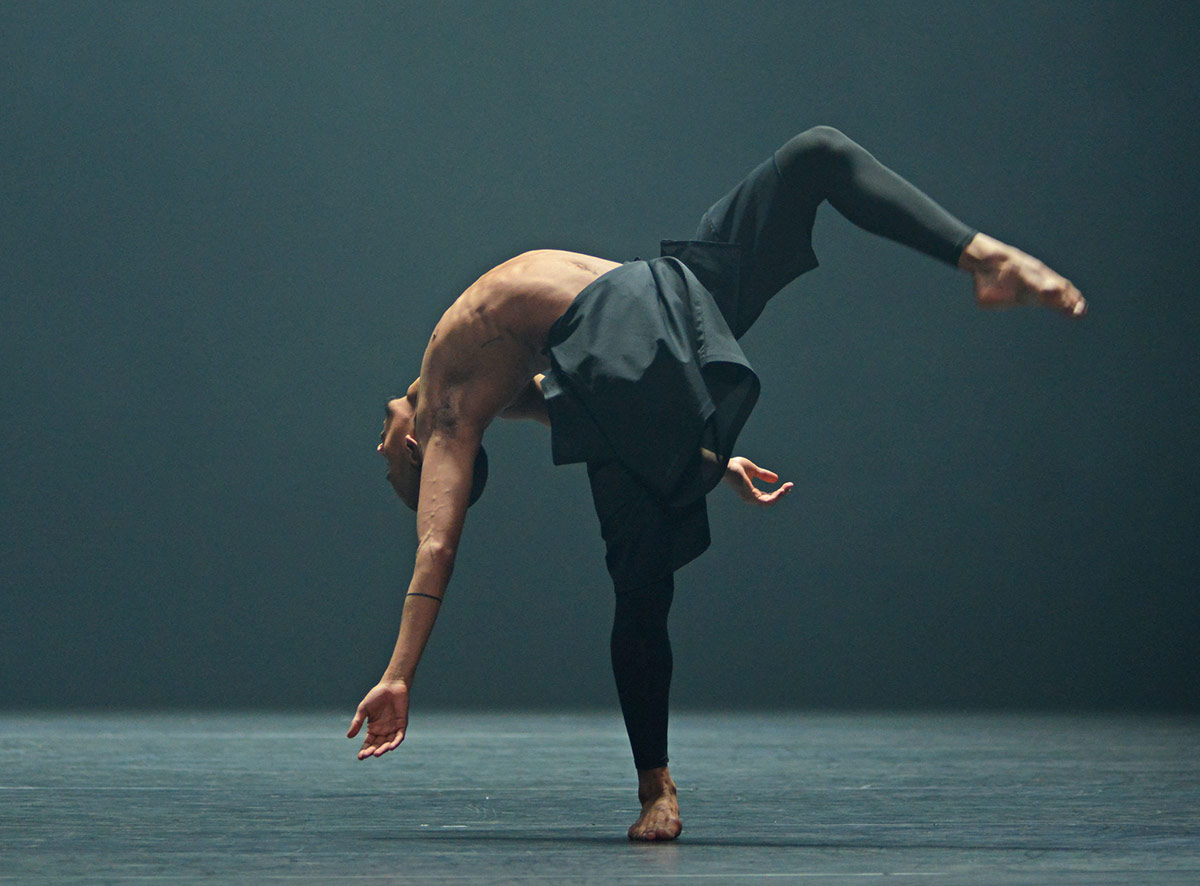
© Dave Morgan. (Click image for larger version)
The opening solo, entitled ‘Avatar’, features Jacob O’Connell in a wide repertoire of serpentine moves: gymnastic, martial arts, stag leaps, spins and moments of stillness. He ends as he began, one arm upraised to the overhanging lighting grid. Is he still McGregor’s avatar when he reappears in different contexts or ‘just’ another dancer?
The Sadler’s Wells stage looks spectacular, smokily lit by McGregor’s lighting designer, Lucy Carter. Colours change dramatically in some sections; beams of light isolate pairs of dancers from a waiting ensemble; a bright beacon dazzles the eyes of spectators. The overhanging structure, with rows of pyramid shapes and neon bars, descends in one scene as if to crush the performers beneath, piercing their chests. Its designer, Ben Cullen Williams, and Carter have been working with McGregor, according to the programme note, ‘to develop an ecosystem in which the dance unfolds authentically, interacting in the viewing with a protean and self-determining context.’ Make of that what you will.
Blackouts indicate changes of scene. So does the music, by electronic composer Jlin, who batters the ears with a metallic racket, squeals, moans and screams, along with pleasanter effects. Baroque music takes over for a trio, a man in a white shirt partnering two women (Jessica Wright and Daniela Neugebauer) in a scene that resembles choreography by Richard Alston. McGregor refers to several other choreographers, Merce Cunningham and William Forsythe among them. A scene involving chairs and altercations between couples resembles a Pina Bausch set of encounters.

© Dave Morgan. (Click image for larger version)
Autobiography is unlike more predictable McGregor works in that it hardly resorts to his signature whiplash convulsions, hyper-extensions and manipulative male-female partnering. He uses a lot of same-sex partnering (unless, of course, the algorithm should decide otherwise). A duet for two men is tender, each taking turns to carry the other one like a child in his arms. Two women behave like mother and daughter, tussling while a recorded voice yells ‘Leave me alone’. A trio of men interlock, then one separates, enigmatically watching the other two wrestle aggressively.
Thanks to Carter’s lighting, shading the edges of the stage, dancers appear and vanish unobtrusively. There are still instances, after two people have been engaged in an intimate duet, they then walk away in opposite directions as though they and McGregor had lost interest. It’s all the more distracting because the encounters in his Autobiography do convey emotional meaning. The dancers are no longer cyphers, though their lean, muscular physiques are costumed to minimise their sexual difference.
The women appear bare-chested in sheer flesh-coloured bras. Black and white shirts, skirts and trousers come on and off, perhaps randomly. As an ensemble, they look like a tribe, moving in unison or even in canon – unusually for McGregor. In one sequence (I had stopped looking at the projected titles) they pace in shifting patterns, forwards and backwards and around the perimeter before assembling into a balletic tableau.
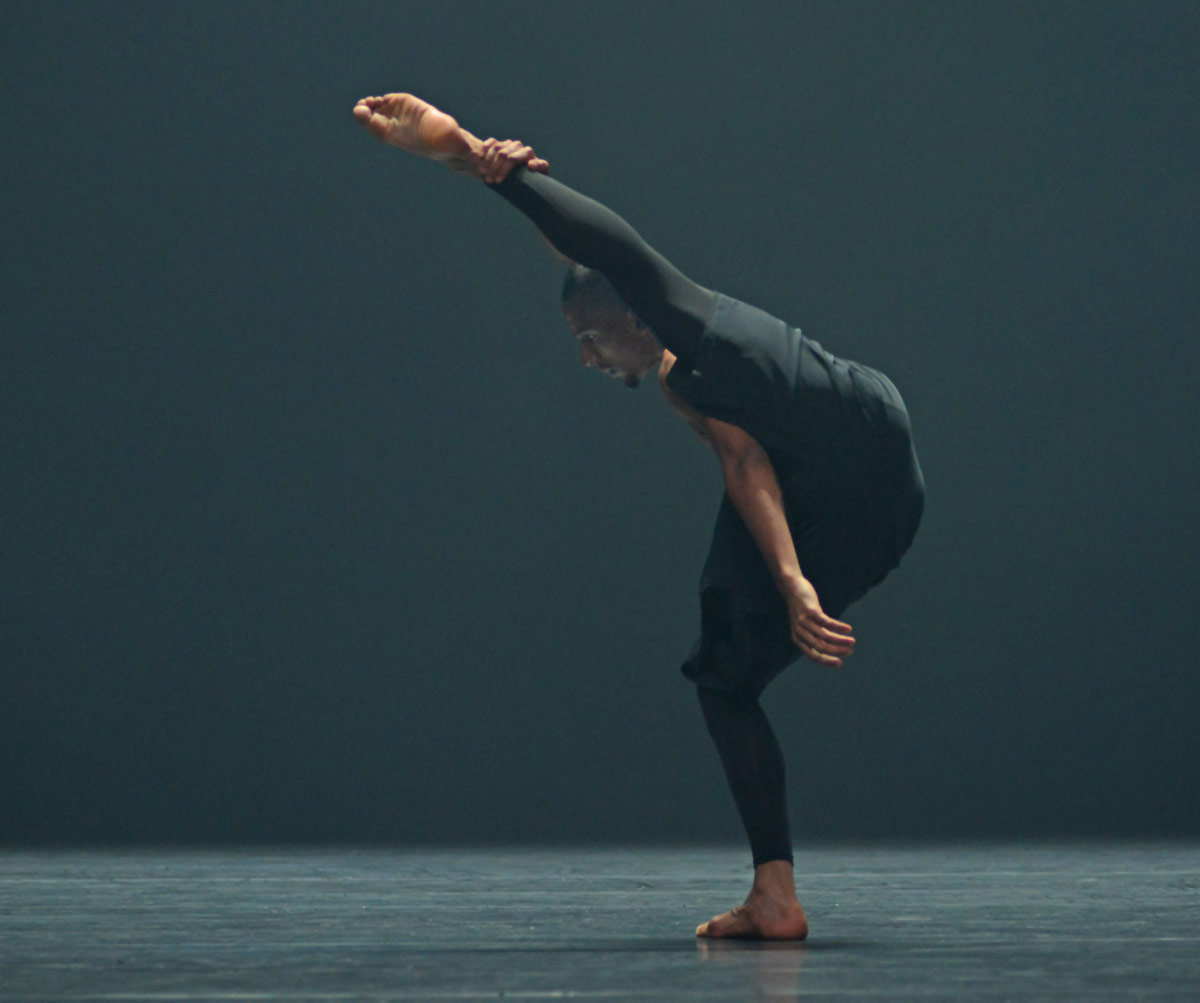
© Dave Morgan. (Click image for larger version)
Towards the end (at this particular performance), they strip down to bikini bottoms and move in slow motion to mystical music. The stage is suffused in blue light, then raked with searchlights. Heavy breathing on the sound-tape suggests death is imminent. One by one, they walk towards the front, looking meaningfully solemn before departing. Hard to believe that McGregor could be so sentimental. Stony hearted, I had lost patience after more than an hour of unconnected sections. So had other members of the audience, slipping out well before the end.
Though there are magical moments when McGregor seems to be reaching for new ways of communicating through dance, the experience is dulled by the arbitrary structure of his material. Solos have no context and duets lose their initial impact. It may be fascinating for the creator of the piece to discover ever-new relationships between the 23 sequences of his choreographed genome, but those of us in the dark have no diagrams to guide our understanding of his material.












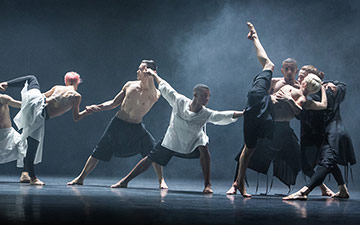
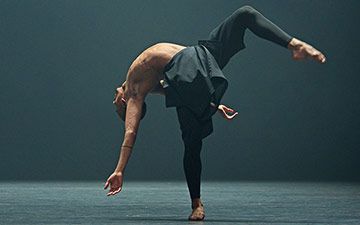
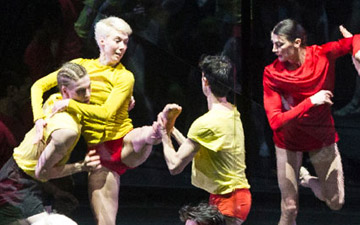


You must be logged in to post a comment.